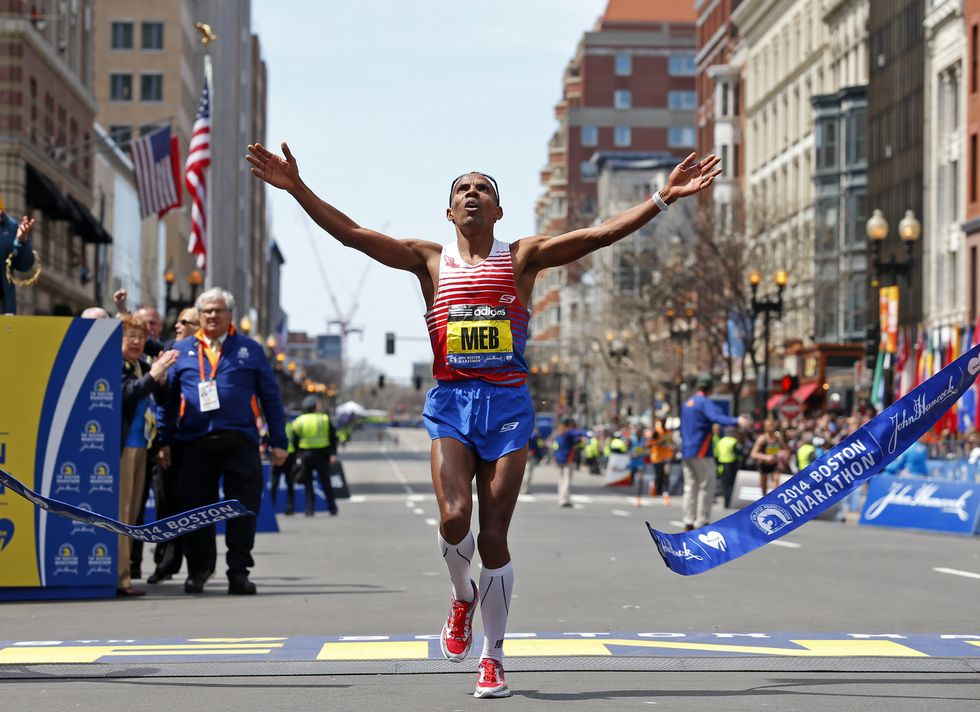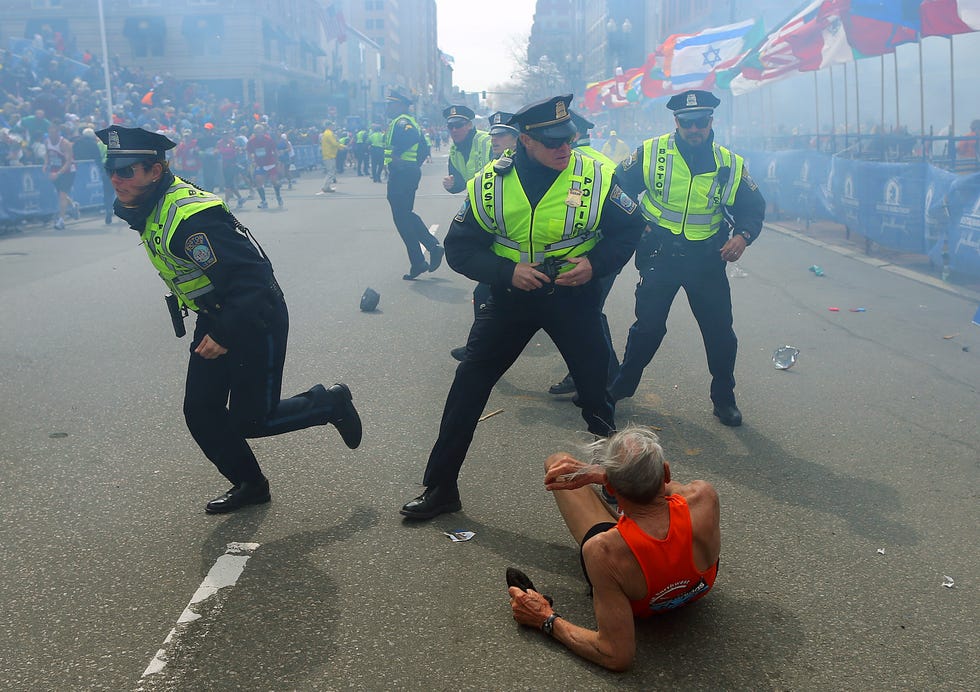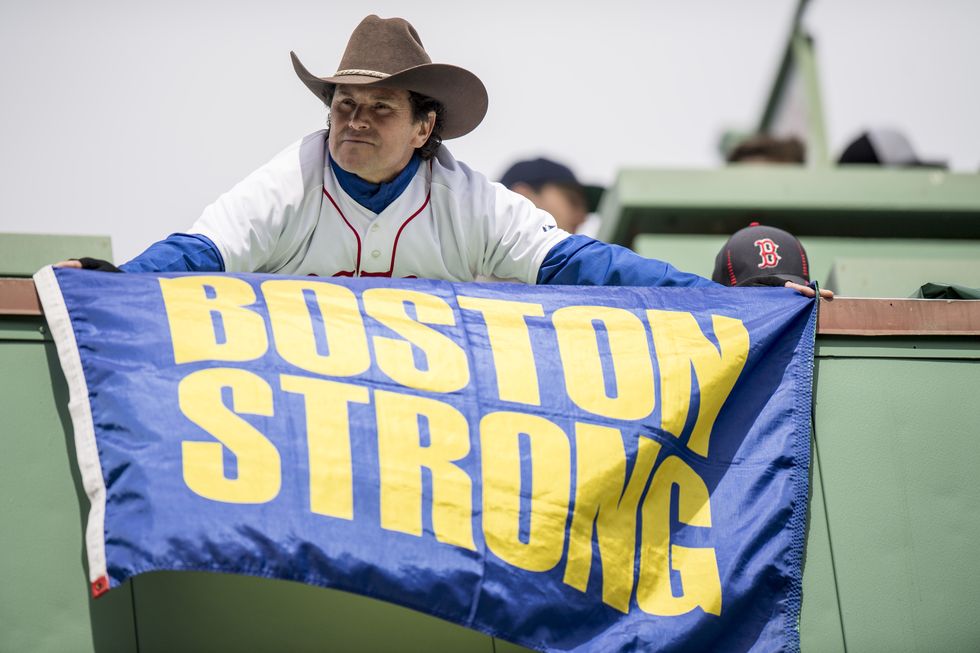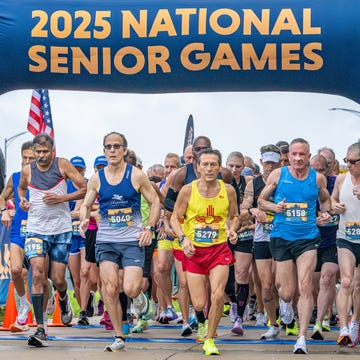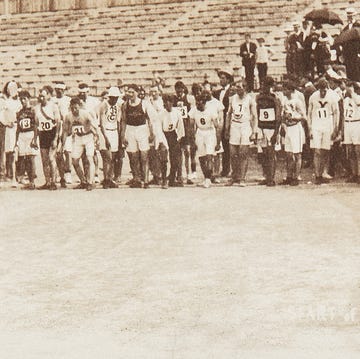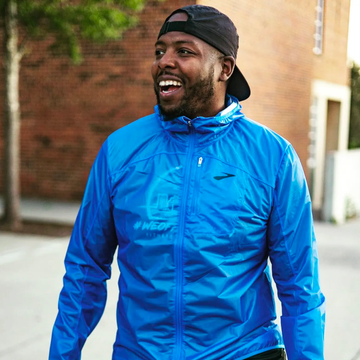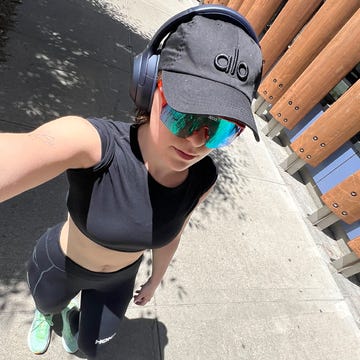On the afternoon of April 15, 2013, two bombs detonated near the Boston Marathon finish line on Boylston Street. Three people died, hundreds were injured, and the running community reeled—then rallied.
Many runners, including those who’d had strong performances that day, struggled to comprehend the violent act. But amidst the horror came moments of kindness, small and large. In the weeks and years afterward, tales of resilience and remembrance filled the pages of Runner’s World and other publications.
Here are 10 of the top stories related to the bombings, with updates about the protagonists.
Meb Wins the Boston Marathon
By Roger Robinson
Olympic silver medalist Meb Keflezighi originally planned to race Boston in 2013, but withdrew the week before with a calf injury. Instead, he was greeting finishers near the finish line, leaving minutes before the blasts.
His victory the following year would have held major significance regardless—he was the first American to claim victory in Boston since 1983. But as longtime running journalist Roger Robinson reports, “if Boston and America were to find healing from last year’s horrific finish-line attack, there could be no better resolution than by an American winning this Boston Marathon (in 2:08:37), and in such a way.”
Keflezighi retired from professional running after the 2017 New York City Marathon. Now, he’s part owner of the Carlsbad 5000 race; a best-selling author; and an ongoing fixture at road races, often appearing on behalf of the MEB Foundation, which promotes youth health, education, and fitness. On Marathon Monday this year, he’ll be part of the broadcast team, calling the men’s professional race on ESPN.
Boston Bombing Survivor Adrianne Haslet Runs BAA 5K Just 3 Months After Car Strike
By Derek Call
When Adrianne Haslet—a ballroom dancer who lost her left leg in the attack—lined up to run the race herself in 2016, she had major start-line nerves. The friend running with her turned to her and said: “What will get you to the finish line is nothing compared to what got you to the start.”
The motto powered Haslet back to Boylston Street (she finished in about 10 hours). And she’s lived by it ever since, through ongoing obstacles. When she was training to return to the race, in 2019, she was hit by a car in a Boston intersection and almost lost her left arm, too. While her injuries kept her from the marathon, she defiantly took on the 5K instead—and writer/videographer Derek Call tagged along for the journey.
Since then, Haslet has continued running; she’s also a motivational speaker and advocate for people with disabilities. She pushed for the Boston Marathon to add competitive para athletics divisions, and last year, placed fourth in her classification in 5:18:41 (with Shalane Flanagan as her support runner and coach). This year, she knows just where she’ll be on April 15—running the BAA 5K in the morning and that evening, receiving the Dick & Rick Hoyt Award at an event for BAA Gives Back.
Big
By Charles Butler
John Young and Juli Windsor were on track to be the first two people with dwarfism to complete the Boston Marathon in 2013. As Charles Butler writes in this profile, they were both stopped at mile 25.4.
But neither gave up—both returned the following year. Young, who had the flu, dropped out after 10 miles, but Windsor finished in 4:43, and indeed became the first little person to cross the finish line. Not to be deterred, Young requalified and returned every year through 2019. Remarkably, he ran his fastest Boston time—5:58:45—in the wet, windy conditions of 2018. “I was literally having the race of my life that day,” he told Runner’s World recently.
While he doesn’t have a qualifying time for this year, Young—who lives in nearby Salem, Massachusetts—will be cheering runners along at around mile 19. He’s registered for a 30-hour ultramarathon in October and the New York City Marathon in November, and hopes to eventually return to the start line in Hopkinton.
Windsor originally planned to run Boston again this year, but chasing her two children—7-year-old Charlie and 4-year-old Elise—made life a bit too hectic for training. But not only does she still run, she’s also continuing her drive to make an impact: she’s currently petitioning the International Paralympic Committee to add a running event for persons with dwarfism to the Paralympic Games. “That’s one of my passions and goals in running, long-term,” she said.
Eyewitness to Bravery, Horror
By Peter Sagal
For years, Peter Sagal—host of NPR’s popular quiz show “Wait Wait ... Don’t Tell Me”—also wrote a Runner’s World column called Road Scholar. In 2013, he was running Boston as a sighted guide for visually impaired marathoner William Greer. They had just crossed the finish line when the bombs went off, as Sagal describes in a dispatch he wrote that evening in a hotel lobby.
Sagal returned to Boston the following year as a guide for paratriathlete Erich Manser. In 2018, he published The Incomplete Book of Running, a memoir about running and life.
Greer was supposed to run in 2014 as well, but broke his metatarsal shortly before; still, the bombings made him determined to continue pursuing long distances. “I feel that I will always be running—I’m never going to stop,” he told Runner’s World by phone this March. He completed the race again, with a different guide, in the gusty winds and rain of 2018, and has completed several more ultramarathons and marathons since. The pair remain friends, and run together when travel takes Sagal to Greer’s hometown of Austin, Texas.
Back on His Feet
By John Brant
Anyone looking for a visual symbol of runners’ resilience in the face of obstacles found it in Bill Iffrig. Then 78 and clad in a bright-orange singlet, he was thrown off-balance by the first explosion and slowly tumbled to the ground. But he got back up and crossed the line, recording a time of 4:03:47.
“You could say that his decision to take the hand of a race official, stand up, and finish the race was really no decision at all, but merely a reflex, little more than another impulse in a day ruled by one deliberate act and thousands of instances of chance,” John Brant writes in this profile. “Or you might recognize that Iffrig had been training for nearly 80 years for this moment, accruing courage and endurance in workaday deposits.”
Iffrig sat out the next year—2014—because he wanted to win in the 80-plus age group, according to his son, Mark Iffrig. In 2015, he came close, running a 4:24:22 to place second. He returned in 2016, but had hurt his back, missed a month of training, and took so long to reach the line he didn’t record a finishing time. Now, Iffrig is almost 89; with his running days behind him, his son cherishes the memories of cheering for his father. “He ran until he literally couldn’t run anymore,” Mark said. “That was his thing.”
Blown Together
By Steve Friedman
The tragic aftermath of the bombings quickly forged bonds between former strangers. In this compelling read from writer Steve Friedman, a college student, a police officer, and a firefighter work together to come to the aid of Roseann Sdoia. The 45-year-old had completed the 5K the day before and was spectating with a friend when the first bomb went off. She ran away—directly into the second bomb. Sdoia survived, but doctors had to amputate her right leg above the knee.
The four—Sdoia, firefighter Mike Materia, college student Shores Salter, and police officer Shana Cottone—kept in touch in the years following. In 2017, Sdoia published a book about their experiences: Perfect Strangers: Friendship, Strength, and Recovery After Boston’s Worst Day.
That same year, Sdoia and Materia married; the following year, he completed the marathon, and Sdoia joined him to cross the finish line. Sdoia, who’s now a motivational speaker, has also taken on athletic feats of her own, including the 86-flight Empire State Building Run-Up in 2017.
For Newlyweds Who Survived Boston Bombings, Healing at Different Paces Is Bittersweet
By Megan Hetzel
Jessica Kensky and Patrick Downes were runners who’d been married only a few months when she leaned over his shoulder to get a better view of the Boston Marathon finish line that day. The first bomb went off directly behind them, claiming both of their left legs. They both finished the 2014 Boston Marathon on handcycles, but after that, their healing trajectories diverged a bit, as Megan Hetzel reported in 2016.
Downes had returned to running on a prosthetic, but after years of pain, surgeries, and agonizing, Kensky chose to have her right leg amputated in 2015. “It’s difficult when you’re at different places along the way during recovery,” Downes told Runner’s World not long afterward. Downes would eventually become the first bombing-related amputee to complete the race on foot in 2016; he crossed the line in 5:56:46.
In 2018, the pair released a children’s book about Kensky’s beloved service dog, Rescue and Jessica: A Life-Changing Friendship. Now, 10 years later, they’ve returned to work—Downes as a therapist, and Kensky as a nurse, as reported by Boston College Magazine. Downes, a Boston College graduate, also endowed a scholarship called Boston College Strong, which provides assistance to students with disabilities.
Fame in a Flash
By Michael Mayo
Even before he became the hero in the cowboy hat in one of the day’s most iconic photos, Costa Rica native Carlos Arredondo had spent some time in the spotlight, as Michael Mayo explains in this South Florida Sun Sentinel feature. Inspired by the deaths of his two sons—one in combat in Iraq, the other by suicide—Arredondo had become an outspoken advocate for both military and mental health issues.
Arredondo’s efforts continued after the photo of him beside Jeff Bauman in a wheelchair catapulted him to national headlines. In 2018, Arredondo returned to complete the race himself, finishing in 6:50 on a windy, rainy day while raising money for the Arredondo Family Foundation, dedicated to preventing military-related suicide.
The following year, he took on the course and fundraising efforts again; at mile 3, he met Thomas Smith, who has had multiple spinal cord injuries and was walking the race on crutches. Arredondo stayed by his side, and the two finished together in around eight hours.
Beyond the Finish Line
By Tim Rohan
In his New York Times best-selling memoir Stronger, published the year after the bombings, survivor Jeff Bauman offers a true glimpse at exactly what the early days of recovery looked like—the highs and lows, including grueling rehab, family drama, celebrity visits, and everything in between.
In the book, he describes the connection he felt to Times reporter Tim Rohan—at the time, a 23-year-old intern at the paper. That’s why, out of all the media requests Bauman received, it’s Rohan who trails him during some of his early treatments, described in unflinching detail in this piece.
In 2017, Stronger became a movie starring Jake Gyllenhaal as Bauman (Chilean-American actor Carlos Sanz portrays Arredondo). Bauman and Erin Hurley—the girlfriend he was cheering on at the 2013 race—married in 2014, the same year their daughter Nora was born, and Hurley finally returned to complete the full Boston Marathon distance in 2016. However, the two divorced in 2017, shortly before the film’s release.
The Power of ‘No More Hurting People, Peace’
By Bill and Denise Richard
The Richard family suffered perhaps the most incomprehensible losses of the day. Bill Richard was injured by shrapnel, and his wife, Denise, was blinded in her right eye. Their daughter Jane, 7 at the time, lost her lower left leg.
And then, there was 8-year-old Martin, the youngest of the three victims who died that day. In the aftermath—alongside the photos of the damage and destruction—another image circulated. There was Martin, in his second-grade classroom the year before, holding a hand-lettered sign advocating for a kinder world.
In the days and years following, the Richard family mourned privately but focused on philanthropy, launching the Martin Richard Foundation in 2014. Charity runners for the foundation, Team MR8, have raised millions of dollars for youth-led service projects, inclusive sports programs, and similar efforts.
Many prominent runners have raced in the team’s singlets. That includes Keflezighi, who ran for the team in 2018, as well as Henry Richard, the family’s oldest child, who was, remarkably, uninjured in the bombings. Henry completed the race last year, at age 20, in 4:02:20. This year, he’ll toe the starting line in Hopkinton again, as captain of a team of runners continuing to honor Martin’s legacy.

Cindy is a freelance health and fitness writer, author, and podcaster who’s contributed regularly to Runner’s World since 2013. She’s the coauthor of both Breakthrough Women’s Running: Dream Big and Train Smart and Rebound: Train Your Mind to Bounce Back Stronger from Sports Injuries, a book about the psychology of sports injury from Bloomsbury Sport. Cindy specializes in covering injury prevention and recovery, everyday athletes accomplishing extraordinary things, and the active community in her beloved Chicago, where winter forges deep bonds between those brave enough to train through it.

